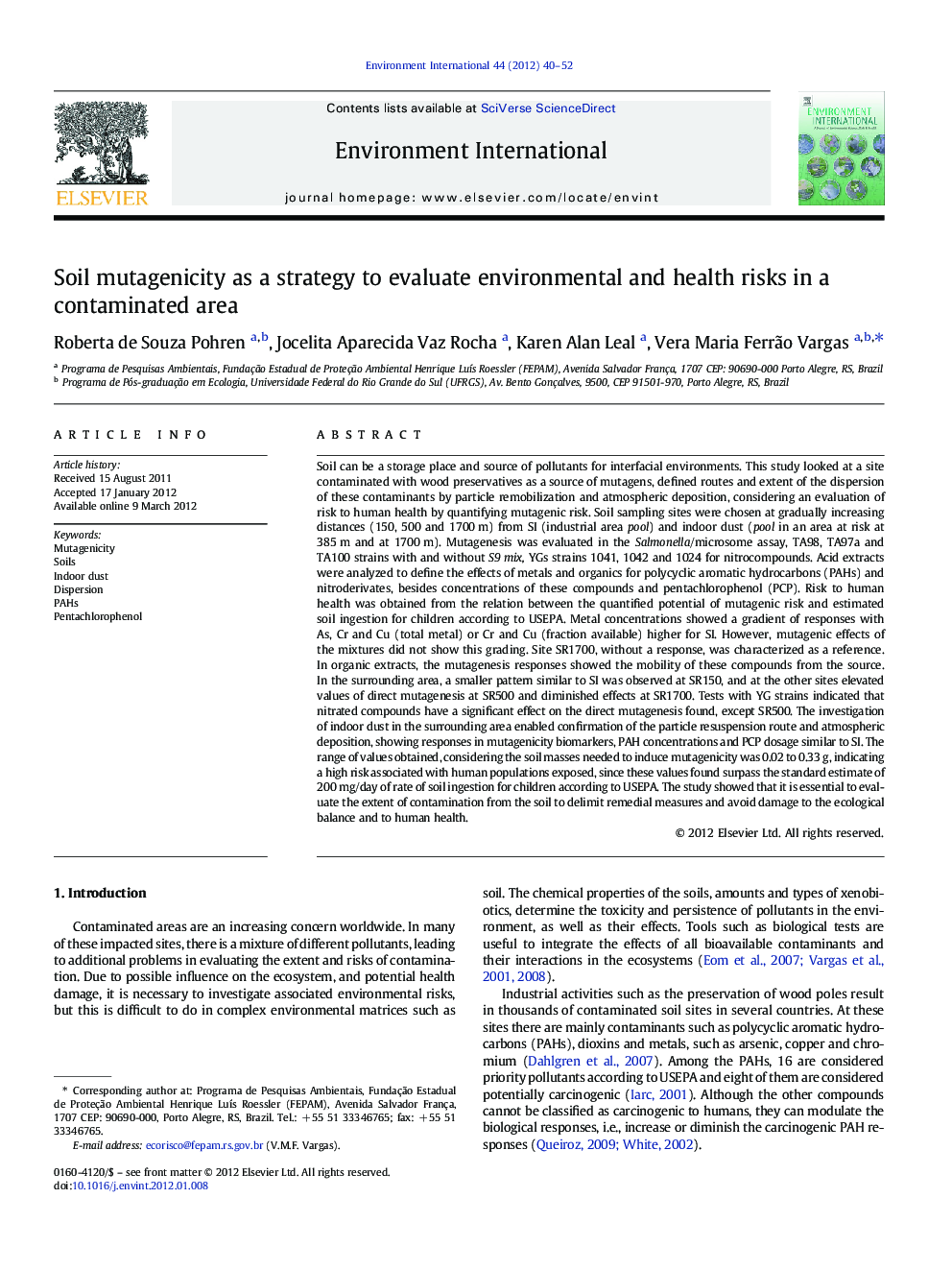| کد مقاله | کد نشریه | سال انتشار | مقاله انگلیسی | نسخه تمام متن |
|---|---|---|---|---|
| 4423074 | 1619083 | 2012 | 13 صفحه PDF | دانلود رایگان |

Soil can be a storage place and source of pollutants for interfacial environments. This study looked at a site contaminated with wood preservatives as a source of mutagens, defined routes and extent of the dispersion of these contaminants by particle remobilization and atmospheric deposition, considering an evaluation of risk to human health by quantifying mutagenic risk. Soil sampling sites were chosen at gradually increasing distances (150, 500 and 1700 m) from SI (industrial area pool) and indoor dust (pool in an area at risk at 385 m and at 1700 m). Mutagenesis was evaluated in the Salmonella/microsome assay, TA98, TA97a and TA100 strains with and without S9 mix, YGs strains 1041, 1042 and 1024 for nitrocompounds. Acid extracts were analyzed to define the effects of metals and organics for polycyclic aromatic hydrocarbons (PAHs) and nitroderivates, besides concentrations of these compounds and pentachlorophenol (PCP). Risk to human health was obtained from the relation between the quantified potential of mutagenic risk and estimated soil ingestion for children according to USEPA. Metal concentrations showed a gradient of responses with As, Cr and Cu (total metal) or Cr and Cu (fraction available) higher for SI. However, mutagenic effects of the mixtures did not show this grading. Site SR1700, without a response, was characterized as a reference. In organic extracts, the mutagenesis responses showed the mobility of these compounds from the source. In the surrounding area, a smaller pattern similar to SI was observed at SR150, and at the other sites elevated values of direct mutagenesis at SR500 and diminished effects at SR1700. Tests with YG strains indicated that nitrated compounds have a significant effect on the direct mutagenesis found, except SR500. The investigation of indoor dust in the surrounding area enabled confirmation of the particle resuspension route and atmospheric deposition, showing responses in mutagenicity biomarkers, PAH concentrations and PCP dosage similar to SI. The range of values obtained, considering the soil masses needed to induce mutagenicity was 0.02 to 0.33 g, indicating a high risk associated with human populations exposed, since these values found surpass the standard estimate of 200 mg/day of rate of soil ingestion for children according to USEPA. The study showed that it is essential to evaluate the extent of contamination from the soil to delimit remedial measures and avoid damage to the ecological balance and to human health.
► soils of contaminated area acts such as a source of mutagens to the surrounding at gradually increasing distances.
► Indoor dust samples characterizes a dispersion's route by sites of contaminated soil.
► Risk to human health was obtained from the potential of mutagenicity and estimated soil ingestion for children.
► Pentachrolophenol in soil and indoor dust allows infer a route of ecological and human exposure for contaminated sites.
► Mutagenicity and concentrations of stressors indicate dispersion to residential sites favoring the estimation of risks
Journal: Environment International - Volume 44, 1 September 2012, Pages 40–52